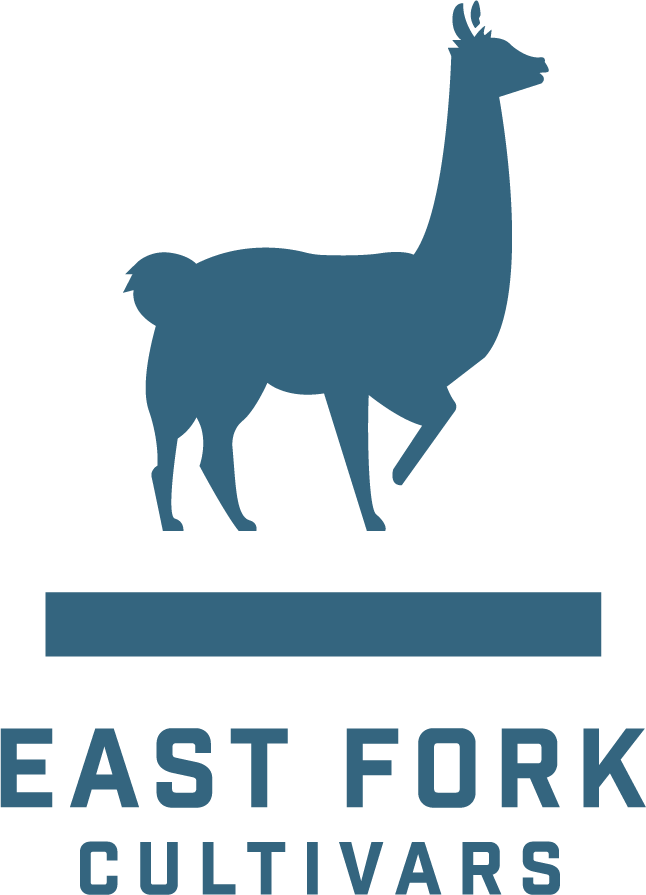East Fork partners with Steward to expand farm to 33 acres, grow USDA Organic hemp
We have some exciting news to share! This summer, we partnered up with Steward, the world’s first “Crowdfarming” platform for sustainably minded farms, and acquired 24 gorgeous acres adjacent to the original East Fork Ranch. This ranch expansion paved the way for our inaugural Farm Bill-compliant craft hemp harvest.
Through concentrated breeding work over the past few years we’ve created a diversity of resinous, flower-focused, medical-grade cannabis cultivars that legally qualify as hemp. We've ported over the CBD-dominant, terpene-rich, low-THC plants to our hemp farm and we can now sell our craft hemp flower and products across the country and around the world. We’re jazzed to bridge the genetic development work we’ve been doing in Oregon’s adult-use cannabis market over into hemp.
With our USDA Organic certification, East Fork is one of Oregon’s first organic hemp crops, allowing our craft hemp to be included as an ingredient in certified organic products.
Craft hemp gives us the opportunity to bring our work to the world, making plant-based therapeutics more accessible and affordable to people from Omaha to Oslo. Cultivating under the Oregon Department of Oregon's Hemp program also allows us the ability to make greater strides in CBD genetic development.
A question we often get is: What’s the difference between hemp and cannabis?
Hemp, legally speaking, is just low-THC Cannabis Sativa, the same genus and species as the well-known resinous versions of the plant. Industrial hemp is a low-resin variety of the plant that has been historically bred for its fiber, nutritional seeds, and other components, with little terpene content and an average total cannabinoid potency of around 2-4 percent. Meanwhile, “cannabis” cultivars are moderate- to (very) high-resin varieties of the plant that have been intensively bred specifically for therapeutic and psychoactive effects, with a wide spectrum of robust terpene profiles and total cannabinoid potencies commonly ranging from 15-25 percent (and even higher).
Because the definition of hemp in the federal government's 2014 Farm Bill includes any Cannabis Sativa plant with less than 0.3 percent THC by dry weight, "craft hemp" growers are able to cultivate high-resin plants that have very low THC but are rich in CBD and other cannabinoids, as well as terpenes. This type of high-resin plant offers much more for our bodies to interact with than low-resin industrial hemp.
Basically, hemp is cannabis with very low THC. Hemp is cannabis that doesn't get you intoxicated. While industrial hemp is designed for fiber and food, craft hemp is designed for medicine, therapeutics and pretty flowers.
Historically hemp has been grown for fiber and seed production. More recently with the increased interest in CBD rich cannabis there has been an explosion in breeding work to develop extremely potent CBD cultivars that can be grown as "hemp" but are visibly indistinguishable from their THC rich "cannabis" sisters.
More recently through hemp pilot programs farmers have began growing CBD rich cannabis that still qualifies as hemp as the THC content is lower than 0.3% THC. Taxonomically it's the exact same species and we're growing it for the same reasons. Many of the cultivars we'll be growing as hemp we also grow under the OLCC. The real differences between hemp and cannabis for cannabinoid production are simply regulatory.
Just like our cannabis, our craft hemp is resinous, therapeutic grade, flower focused, carefully harvested, dried, and cured to preserve the three valuable compounds that make up the plant; terpenes, cannabinoids, and flavonoids. We’re highly jazzed to share our craft hemp with everyone. Made with love and science to help people live better lives.



